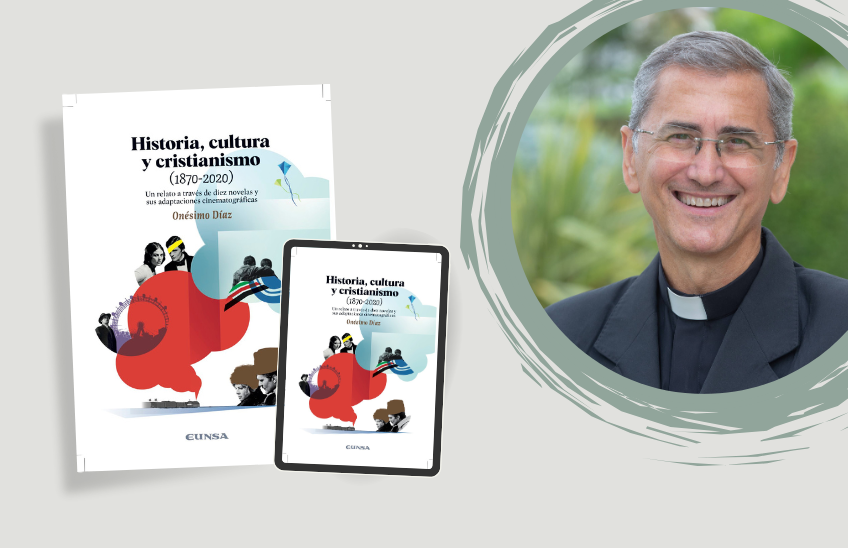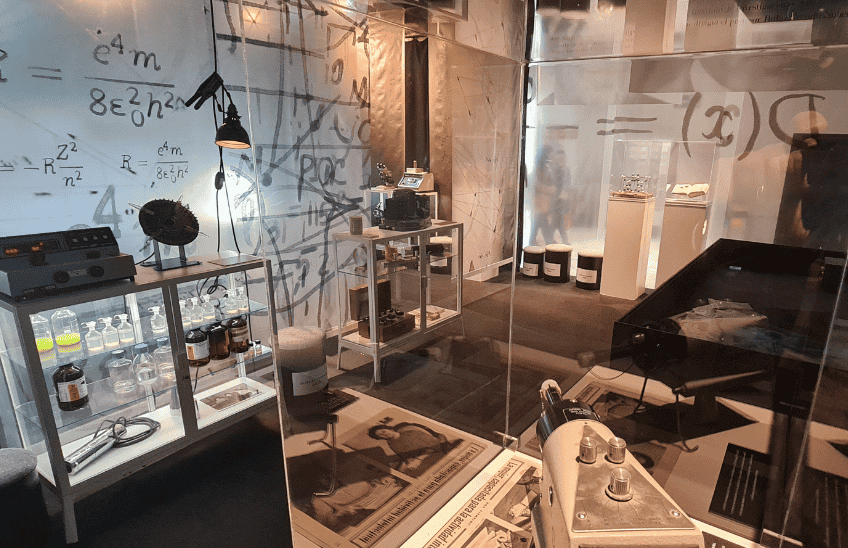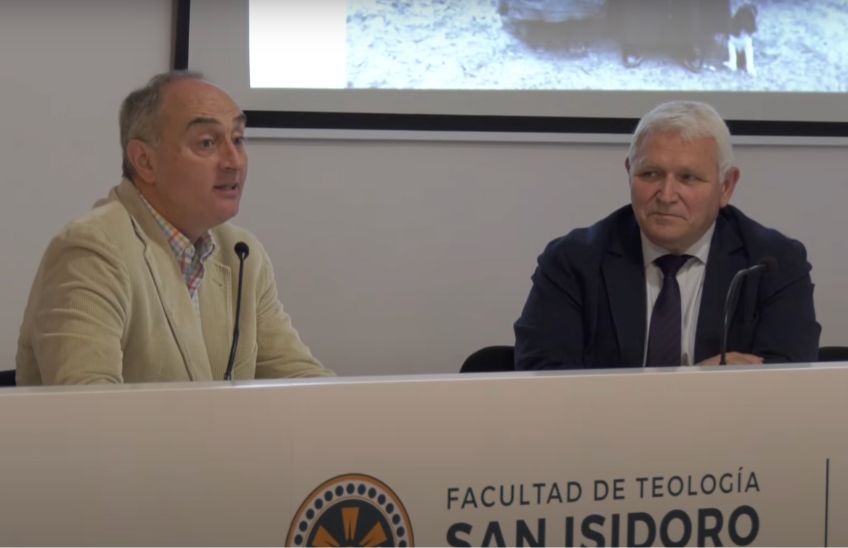The final leg of the exploration of the Americas
Chronicle of the trip through America (Part 5). Among the countries visited by Pedro Casciaro, Ignacio de la Concha and José Vila were Chile and Argentina. They were the last destinations of an extensive pathway through the American continent.
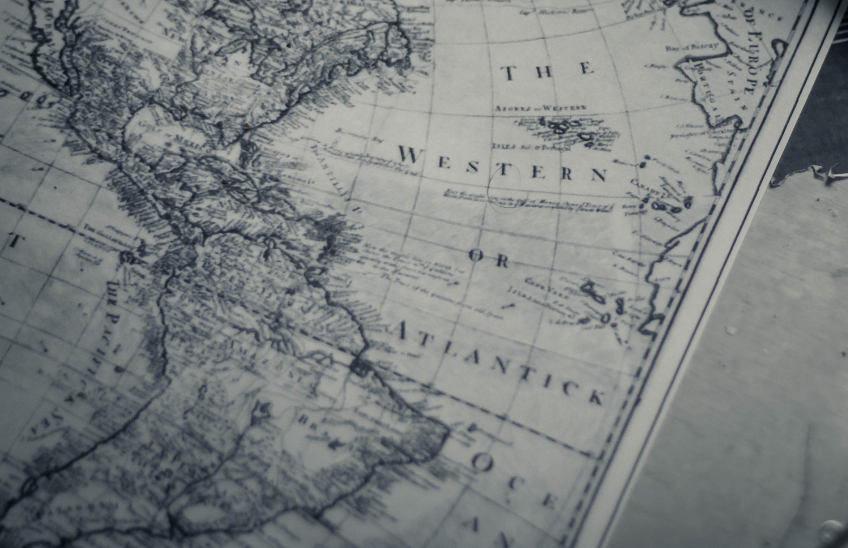
21 | 08 | 2023
After traveling through the United States, Canada, Mexico and Peru, the three travelers continued their journey to the south of the continent. It was the final stage of their journey and they had to evaluate the possibilities for Opus Dei to establish itself in America. They had a list of contacts and several letters of recommendation for Chile and Argentina.
Chile
On August 16, 1948, they arrived in the Chilean capital. In a letter to the founder of Opus Dei, Pedro Casciaro told him that they would be in Santiago de Chile for a week, so that "we could stop longer in Argentina, because there are many letters from presentation that we have for there". But as happened in other cities, the stay in Chile took longer than expected: the scheduled week turned into eleven days.
The decision to go to Chile was due to the fact that there was interest in the Work starting to work there. Some years earlier, in 1946, the priest Raul Perez Olmedo, Vice President of the Pontifical Catholic University of Chile and advisor of Catholic Action, had expressed in Rome his concern about the religious status of the university students who came to Santiago to study. Giovanni Battista Montini advised him to talk to the founder of Opus Dei. In fact, in Madrid they met with St. Josemaría, the Bishop of La Serena, Alfredo Cifuentes, Pedro Casciaro and Adolfo Rodríguez Vidal, a naval engineer who was preparing to receive the priesthood and, years later, would go to Chile to begin the work of Opus Dei.
Both Father Pérez Olmedo and Monsignor Cifuentes expressed their desire that the Work would soon collaborate in the university apostolate in Chile. During the next two years their contact continued by means of letters. Pérez Olmedo insisted that someone from Opus Dei travel to Chile as soon as possible. Thus he wrote to Casciaro in 1947: "If it will be possible for someone to come, even for a short time. If he were to stay, it would be better"; in addition, he asked for the statutes of the Work, which Casciaro sent him. Grateful, Pérez Olmedo told him that after translating them from Latin into Spanish he would send them to several bishops, and asked him for any news about the arrival of someone from Opus Dei in Chile.
In 1948 Pedro Casciaro told Monsignor Cifuentes about his upcoming trip to Chile:
"You don't know how much I celebrate the good news that you give me of your trip to Chile in two or three more months. May the Lord grant that for your arrival I will be in Santiago to be able to greet you. I am sure that this trip will not be for tourism, but of great benefit for future projects of the Work here in Chile where we need it so much".
Once in Santiago, Casciaro visited Pérez Olmedo, who was ill and knew nothing about the exploratory trip of the three members of Opus Dei. Pedro Casciaro had written to him about their arrival in Chile, but his letter did not reach its destination. He did not manage to meet with Monsignor Cifuentes because it was impossible for them to travel to the diocese of La Serena. Monsignor Cifuentes wanted them to start a student residency program as soon as possible.
As in Peru, the three travelers in Chile had the support of Spanish diplomats at partnership . In particular, the Minister of the Spanish Embassy, Francisco Javier del Castillo. He helped them arrange visits with the Cardinal of Santiago, Monsignor José María Caro, and with some academics from the University of Chile and the Catholic University. The Cardinal and the Catholic University's President , Father Carlos Casanueva, had notions about Opus Dei and both showed interest in the Work arriving soon in Chile to collaborate with the apostolate with university students.
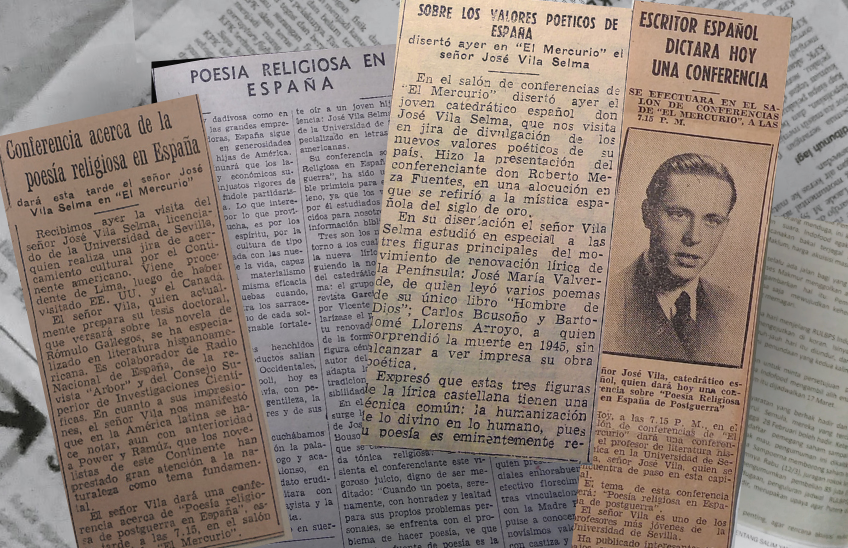 Clippings Clippings from the Chilean press commenting on José Vila's lectures
Clippings Clippings from the Chilean press commenting on José Vila's lectures
The two young professors of the expedition, Ignacio de la Concha and José Vila, continued their culturalmission statement and interacted with the Chilean intellectual and university world. De la Concha, for example, gave two lectures at the University of Santiago on the History of Law.
Argentina
The travelers visited Argentina between August 16 and September 22. In Buenos Aires, the Spanish Embassy provided logistical support and contacts. Secretary Antonio Poch and Ambassador José María de Areilza arranged for them to meet with Nuncio Giuseppe Fietta and the Cardinal of Buenos Aires, Santiago Luis Copello. Both encouraged them to begin the apostolates of the Work there soon.
They were also received by the bishops of Salta and the auxiliary of Buenos Aires, Tomás Juan Carlos Solari, who put them in contact with Manuel Novoa, an assistant priest of the university Catholic Action.
From September 8 to 11 they were welcomed in Rosario by Cardinal Antonio Caggiano. He wanted them to stay longer to get to know the university and a group of Catholic students. However, it was not possible for them to stay longer in Rosario.
Casciaro, De la Concha and Vila immersed themselves in the intense university life of Buenos Aires. A Spanish Full Professor , Alfonso García Gallo, who had been the director of Ignacio de la Concha's thesis and who, like them, was passing through Argentina, helped them to establish academic contacts. Thus, they met prominent jurists and professors, such as Claudio Sánchez Albornoz, Full Professor of History, exiled from Spain due to the civil war and settled in Argentina since 1940. Also, Ricardo Levene, a prominent Argentine historian, then president of the National Academy of History.
Through these colleagues De la Concha was able to give several lectures at the University of Buenos Aires and at the Catholic Culture Courses, the embryo of the Catholic University of Argentina erected in 1958.
They also went to the Institución Cultural Española de Buenos Aires, better known as the Cultural Española, created in 1914 to disseminate in Argentina programs of study literary and scientific publications published in Spain, through Chairs occupied by Spanish academics and activities of exchange cultural between the two countries.
Desire to start in Chile and Argentina
_
At the end of their journey through these two countries, the expedition members concluded that a great panorama lay ahead. Pedro Casciaro commented to the founder his vision of Chile:
"The impression we have taken from Chile is stupendous. It is unbelievable in so few days as we have been there, the amount of attention and the cordial welcome we have received. There is a lot of spiritual restlessness. The students are of great human and social category and the possibilities for a splendid residency program . For the economic question mainly the thing would come out very quickly because there are very good friends and the Archbishop of La Serena and all the Prelates have prepared the ground for us to go".
This description contained all the elements for the Work to reach the country: the possibility of opening a residency program for university students, the authorization of prelates for the apostolic beginning and the sponsorship of benefactors to build this residency program for students. This would be the quarry to spread the Work and find vocations among the students and the same professionals who supported the project with their resources.
The exploration of Chile was fruitful. In March 1950, Father Adolfo Rodríguez Vidal arrived to establish the Work in the Andean country. Years later he himself wrote: "Opus Dei did not have the means to help me, but the Father [St. Josemaría] was not only bold, he was also prudent. A few months earlier he had sent Don Pedro Casciaro with two or three other members of the Work on a tour of the Americas. In Santiago they contacted many people and, when it was my turn to leave Spain, they gave me a list of people who could help me.
In 1951, a young university student, José Enrique Díez, arrived in Chile to help in the beginnings of the apostolates of the Work. The panorama was completed in 1953, with the arrival of the first women of Opus Dei: Dorita Calvo, Petrita Angulo, Rosario Gómez Antón and Patricia Ylarraz. They started up a student residency program .
In Argentina, the outlook was also encouraging. The intense activity carried out during their stay allowed them to get to know Catholic people and environments. In addition, the good predisposition and financial aid of Cardinal Caggiano facilitated the arrival in Rosario in March 1950 of the priest Ricardo Fernández Vallespín and the professors Ismael Sánchez Bella and Francisco Ponz. Although it was a new exploratory trip, similar to that of the three pioneers of 1948, in fact it became definitive. Vallespin and Sanchez Bella stayed in Rosario and began the stable work of Opus Dei. The following year, 1951, the priest Ignacio Echeverría and two students, José Luiz Gómez López-Egea and Ángel Ruiz Vallés, arrived.
The women, on the other hand, were only able to settle in at the end of 1952 and not before, due to bureaucratic difficulties. At that time, only Sabina Alandes was able to travel. A few months later Rosa María Ampuero and Sofía García arrived. In Rosario, Sabina Alandes was received by two young women, Julia Capon and Ofelia Vitta, who had already requested Admissions Office to the Work.
But the story of these women and men of the Work in these countries is another chapter to tell.
______________
Text elaborated from:
Santiago Martínez Sánchez, "Los ojeadores. A long journey through America". Episode of the Fragments of History podcast (2023).
Santiago Martínez Sánchez, "The scouts. A long journey in 1948 to prepare the arrival of Opus Dei in America," in Studia et Documenta, Vol. 17, (2023), pp. 67-109.
Santiago Martínez Sánchez and Federico Requena, "La expansión transnacional del Opus Dei desde España a Iberoamérica: orígenes, modalidades y contextos (1948 -1956)", in Revista de Historia, Nº.30, (2023), pp. 1-35.
Related content:

